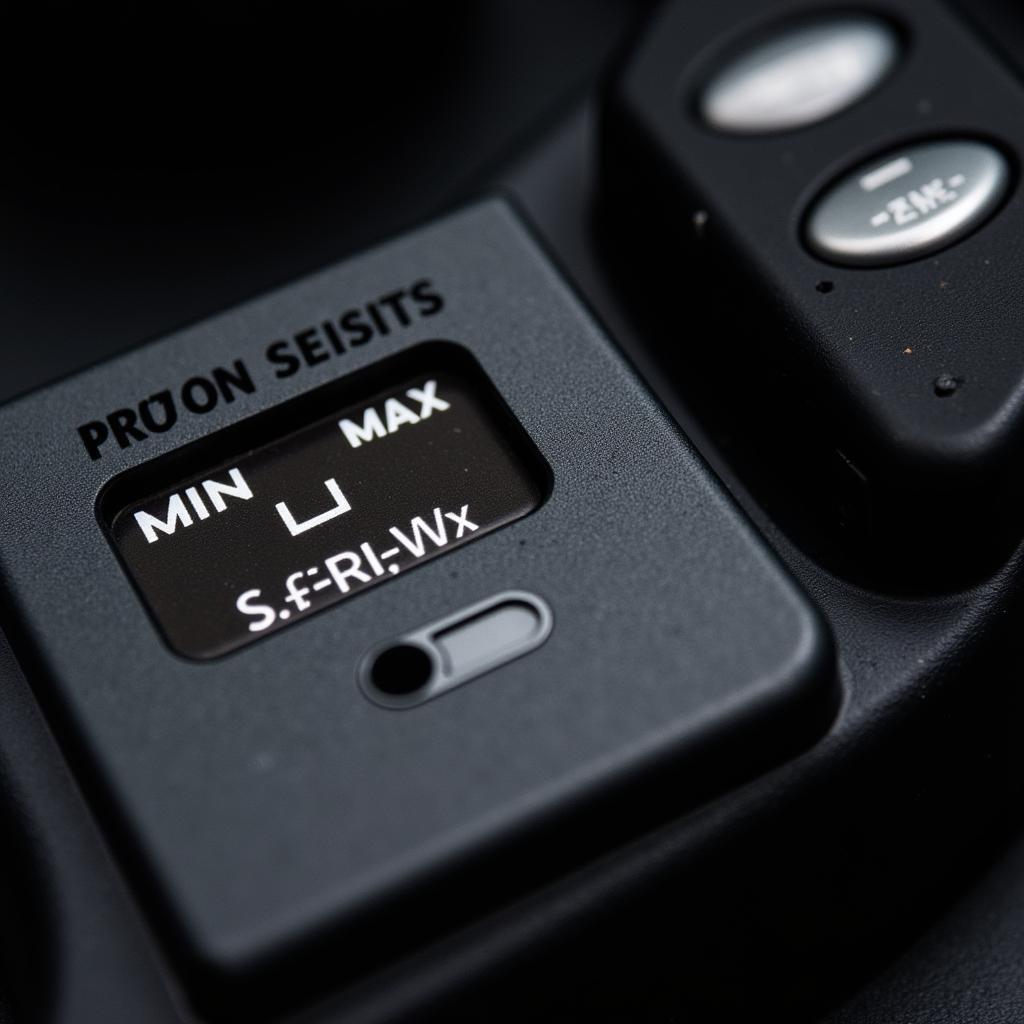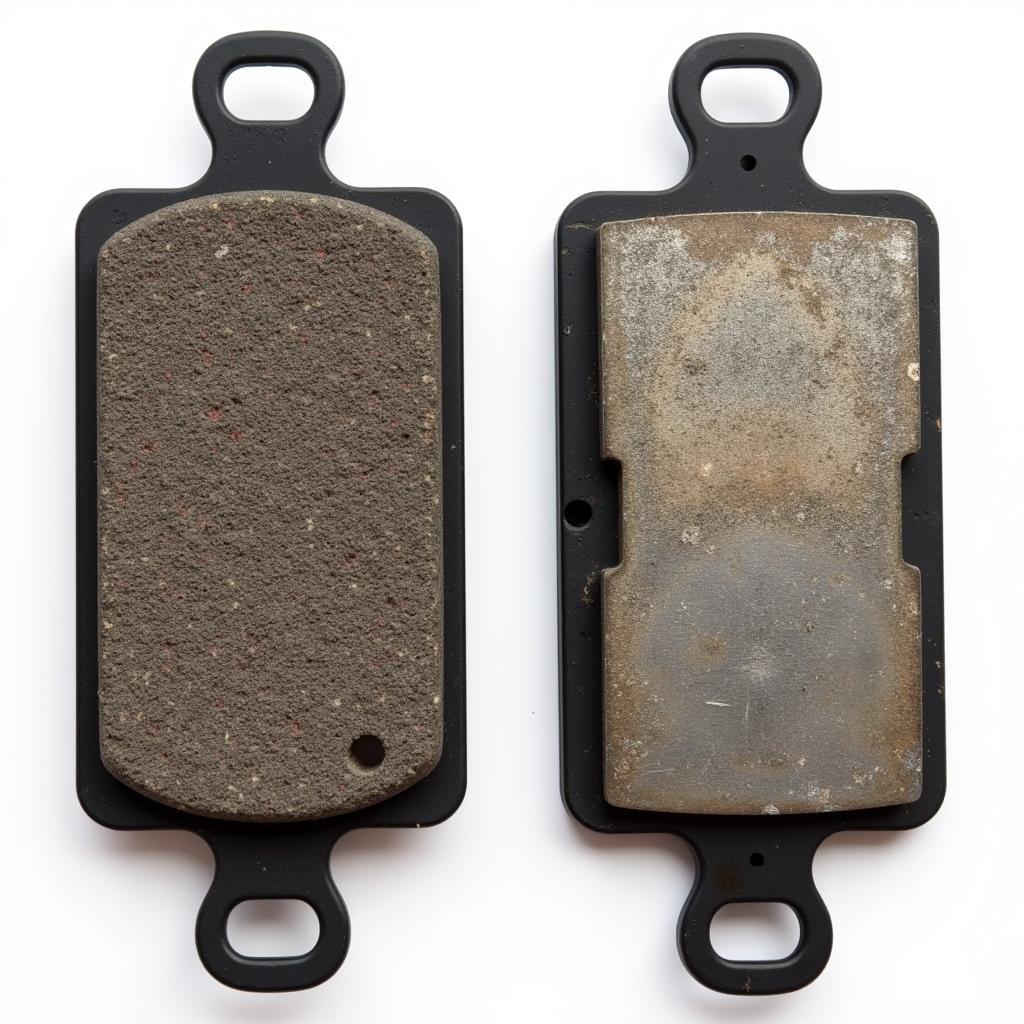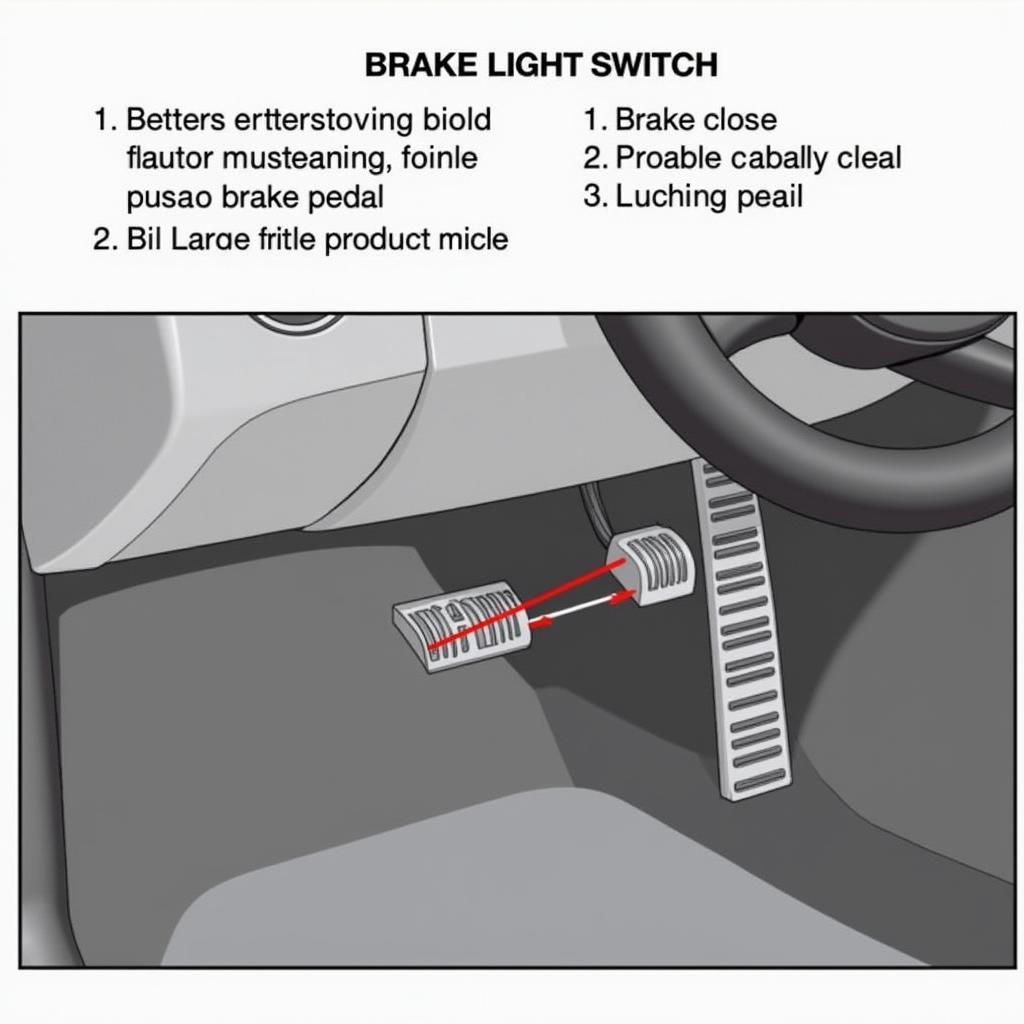A glowing brake warning light on your dashboard can be a nerve-wracking experience. It’s a clear sign that something isn’t right with your braking system and needs immediate attention. Ignoring this warning could lead to costly repairs or, even worse, a dangerous situation on the road.
This comprehensive guide delves into the common reasons why your brake warning light might be on and provides insights into how you can address the issue.
Common Culprits Behind a Persistent Brake Warning Light
There are several reasons why your brake warning light might stay on. Let’s break down the most common culprits:
1. Low Brake Fluid Level
 Low Brake Fluid Level
Low Brake Fluid Level
One of the most common reasons for an illuminated brake warning light is a low brake fluid level. Your braking system relies on hydraulic pressure to function correctly, and brake fluid is the lifeblood of this system. When the fluid level drops below a certain point, it triggers the warning light. This usually happens due to:
- Brake Pad Wear: As your brake pads wear down, the brake calipers need to extend further to engage the rotors. This extension requires more brake fluid, gradually lowering the level in the reservoir.
- Brake Fluid Leak: A leak anywhere in the braking system, be it the master cylinder, brake lines, or calipers, will lead to a loss of brake fluid and trigger the warning light.
What to do: If you suspect low brake fluid, it’s crucial to check the fluid level in the reservoir. If it’s low, carefully top it up with the recommended brake fluid type for your car. However, it’s essential to get your braking system inspected by a qualified mechanic to diagnose the underlying cause of the low fluid level.
2. Worn-Out Brake Pads
 Worn Brake Pads Comparison
Worn Brake Pads Comparison
Your brake pads are designed to wear down over time. They are the sacrificial components that create friction against the brake rotors to slow down or stop your car. Most cars have a built-in wear indicator in the brake pads, which is a small metal tab that makes contact with the rotor when the pads wear thin. This contact creates a high-pitched screeching sound, alerting you to the need for brake pad replacement.
What to do: If you hear the telltale screeching sound or if your brake warning light is on, it’s time to have your brake pads inspected by a professional. Driving with worn-out brake pads can damage your rotors and severely compromise your braking ability, putting you at risk.
3. Faulty Brake Light Switch
 Brake Light Switch Location
Brake Light Switch Location
While most people associate the brake warning light solely with the braking system, it’s also connected to your brake lights. A faulty brake light switch, responsible for turning on the brake lights when you press the pedal, can also illuminate the warning light.
What to do: Testing your brake lights is easy. Have someone observe the rear of your car while you press the brake pedal. If the brake lights don’t illuminate, there’s a good chance the brake light switch is the culprit. Replacing the brake light switch is a relatively straightforward job for most DIY enthusiasts, but you can always consult a mechanic if you’re unsure.
Less Common but Equally Important Reasons
While the above reasons cover the most frequent culprits, several less common issues can also trigger your brake warning light.
-
Faulty ABS Sensor: The Anti-lock Braking System (ABS) in your car relies on sensors to monitor wheel speed and prevent wheel lockup during hard braking. A malfunctioning ABS sensor can disrupt the system and illuminate the brake warning light.
-
Issues with the Master Cylinder: The master cylinder is the heart of your braking system, responsible for converting pedal pressure into hydraulic pressure. Any issues with the master cylinder, such as internal leaks or a malfunctioning piston, can lead to braking problems and trigger the warning light.
-
Electrical Problems: Like any other system in your car, your braking system relies on electrical components such as wiring and connectors. Damaged wiring, corroded connectors, or a faulty brake warning light switch can all cause the warning light to illuminate.
What to Do When Your Brake Warning Light Stays On
If your brake warning light stays on, don’t ignore it. It’s crucial to take the following steps:
-
Assess the Situation: Is the light on constantly, or does it flicker? Do you hear any unusual sounds while braking?
-
Check for Obvious Signs: Safely park your car and visually inspect the brake fluid level. If it’s significantly low, there might be a leak.
-
Avoid Driving (If Possible): If you suspect a serious brake issue or if the brake pedal feels spongy or unresponsive, avoid driving your car. Instead, have it towed to a qualified mechanic for inspection.
-
Consult a Qualified Mechanic: In most cases, it’s best to consult a qualified mechanic to diagnose and address the root cause of the illuminated brake warning light.
Brake Warning Light: Your Call to Action
The brake warning light on your dashboard is not a suggestion; it’s a clear warning that requires immediate attention. While it might be tempting to dismiss it as a minor inconvenience, especially if your car seems to be braking fine, ignoring it can lead to severe consequences.
Regular vehicle maintenance, including brake inspections, can help prevent many of these issues before they escalate. Remember, a well-maintained braking system is crucial for your safety and the safety of others on the road.
